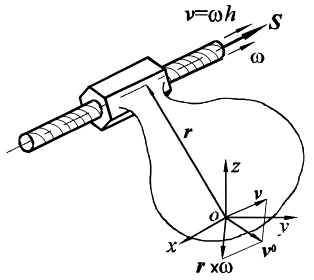Translation of a Rigid Body:
In the preceding section while we have considered the problems on particle kinetics, we have really considered rigid bodies with mass concentrated at the centre of gravity of the same.
In this section, we shall consider the problems which involve the magnitude and/or position of forces which will try to impart the translation motion to a rigid body. Basic criterion, we consider here, is the resultant of all the applied forces shall pass out through the mass centre of the body. Consider a body being acted upon by forces as shown in Figure (a).

Figure Equivalence of Applied Forces and Resultant Effective Forces
This force system is equivalent to a resultant force passing out through the mass centre of the body as illustrated in Figure b). Sum of the forces in any direction (Figure (a)) is equal to the sum of the forces in the same direction as illustrated in Figure (b). Also, sum of the moments around any point for part (a) is equal to the corresponding sum of moments for part (b).
If we let moments about G, it is clear that the sum of the moments shall be zero
By Using D′Alembert's principle for the system and we obtain the same result - it is obvious that by introduction of inertia force, the body has got zero resultant, also sum of the moments around any point is zero. Therefore all the methods developed in statics may be used. By addition of inertia force to the existing system of forces acting on the body, as shown in Figure (b), we form the condition known as dynamic equilibrium.